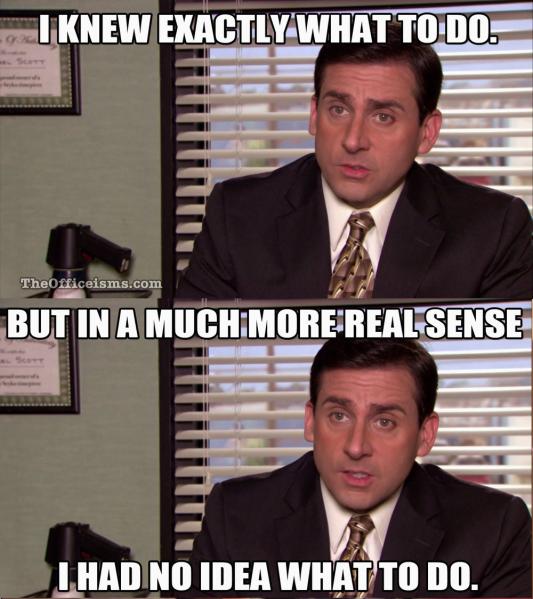I feel like the word “core” gets tossed around haphazardly because people think they know what all goes into a person’s “core”, but in reality there is much more to it then what meets the eye. I plan to reveal the complexities of the human core but first we have to lay the groundwork. To give you a basic understanding of core we have a great blog that gives you an overview of what your core really is and the muscles involved. You can take a look at that here. Once you understand the simple jobs and anatomy of the core, next we go into its jobs. Understanding what it does makes it clear when your core is not functioning correctly.
The first job our core does is stabilize.
The first way it stabilizes is what most people are familiar with, which is a rigid stability. This is when you want your spine to maintain the same position through movement. In order for this to happen, your large muscles and deep muscles have to turn on together and stay on together while you go through the movement. Strength is helpful for good core stability but the other thing they need to be able to do is coordinate and work together. Strength can only take you so far if that strength isn’t used efficiently.
The second way our core stabilizes us is flexible stability. We were made to flex, extend, rotate and move in every direction without losing control and without pain. In order for that to happen deep muscles need to be on and active all day as you move through your day. This is an unconscious system that should work without thinking, but things like pain can interrupt this system.
The second job of our core is to create a balanced pressure system.
This is when our diaphragm and pelvic floor, two of our lesser known core muscles come into play. The diaphragm is located at the bottom of the rib cage and looks like an umbrella placed at the base of your ribs. This muscle helps with inspiration and expiration. On inhale the umbrella opens wide and on exhale it closes down, bringing your rib cage with it. The pelvic floor sits at the base of your pelvis and is like a hammock strung between your pelvic bones. This muscle group is responsible for opening and closing your holes as well as supporting your spine and hips.
The transverse abdominis, the diaphragm and the pelvic floor all work together to help you manage pressure. Think of your abdomen like a canister: your diaphragm at the top, your pelvic floor is the bottom and your transverse abdominis wrapping around from your spine to your belly button to create the cylinder. Each part needs to work together in order to create equal pressure in the canister. When one is doing too much or too little work, the pressure has to be accommodated somewhere so the others have to change their contribution to make up the difference. The system is tied in close to your breathing because of the influence of the diaphragm so as you breathe in and out there should be a natural contracting and relaxing of those muscles in unison. So what happens when it all goes wrong?
Signs of an ineffective core

Low back pain after turning to look behind you in the car, and bending and twisting to pick up a sock is a sign of your core not providing flexible stability. Have you ever moved too quickly, suddenly felt your back spasm and ended up laying on the couch for a couple of days because you feel like you can’t move? This can be due to your deep stabilizers not coordinating well and when they sense the sudden and abrupt movement they go from too lax to overly tightening because it doesn’t know what else to do. As a result you get pain, loss of movement and you have to wait until that muscle decides it is safe to move again for it to subside.
A sign of an ineffective core providing rigid stability can present itself in back pain after squats, deadlifts and other lifts. I cannot tell you how many really strong and athletic people come to see us for back pain. They accept it as “normal” when their back hurts after work outs and end up approaching exercise with an attitude of pain. The problem is, they have so much strength in the larger muscles but the deeper muscles are not playing their part. The coordination and communication between the two is disconnected and you end up with an imbalance in the system and it is unable to handle keeping your body secure during movement.

Leaking with exertion is a commonly overlooked symptom in the active community and demonstrates a problem in the balanced pressure system. This is not just limited to postpartum women struggling with controlling their pee with exercise. Truth is, leaking of any kind, urine, gas or feces is a sign that your pressure management is not in check. When abdominal pressure gets too high, usually caused by bearing down or breath holding with movements, the pelvic floor muscles have to give out to relieve the pressure and it becomes a terrible guessing game of what just happened.

Much like leaking, hemorrhoids are also a big sign of issues in our balanced pressure system. With leaking it is a matter of the pelvic floor opening when in order to relieve pressure, hemorrhoids are the opposite. This is a problem seen when the pelvic floor is over tight and makes it hard for things to exit the body. When you have all that abdominal pressure and a pelvic floor that won’t open when we need it to, hemorrhoids usually develop as a result because it puts so much strain on your rectum.

Too often we assume that these issues are just a normal part of life, but that is not the way it has to be. You can retrain these systems so that your body works for you, not against you. If you find yourself with any of these signs that your core may be lacking effectiveness, reaching out to a professional to help find where your opportunity areas are is a great place to start!